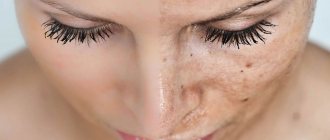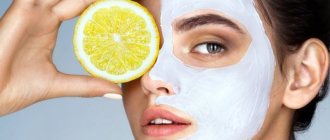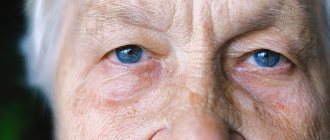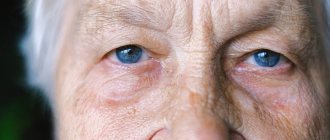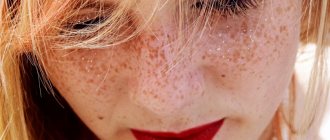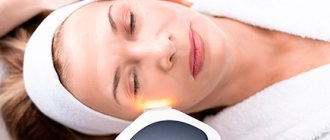Laser rejuvenation is a fairly popular and popular hardware cosmetology procedure, which more and more patients turn to every year.
In laser rejuvenation, a distinction is made between resurfacing and peeling. Laser peeling is essentially a light skincare procedure designed to renew the top layer of skin - the epidermis. Laser resurfacing is loved for its versatility and effectiveness. The resurfacing procedure is designed to renew the skin as much as possible - the effect affects both the epidermis and the dermis.
Some cosmetologists also classify IPL procedures (Intensive Pulse Light, i.e. “intense pulsed light”), but this is not correct: IPL procedures are used to treat skin hyperpigmentation, but are not laser.
People admit that they have been trying various means of eliminating hyperpigmentation for years, spending large sums of money, suffering the consequences of their own mistakes, until they come to the right conclusion:
hardware procedures are sometimes the only rational option for combating age spots and pigmented formations.
To combat pigmentation, professional cosmetologists offer patients either IPL procedures (aka IPL phototherapy) or laser resurfacing, depending on the severity of the problem and the general condition of the skin.
The principle of operation of laser resurfacing of age spots
The laser beam, due to its high temperature, “burns” areas of the skin according to a given pattern (see fractional laser exposure). When resurfacing, the laser penetration depth usually reaches the dermis, which means that all epidermal cells containing excess melanin are also destroyed. In their place, new tissue is formed, with new cells of a natural color.
Recovery after laser resurfacing is quite long - from 7 to 15 days, the skin goes through a recovery cycle, crusts form; During this period, she requires delicate care.
Difference between IPL and laser resurfacing
The principle of operation of laser resurfacing and IPL phototherapy is indeed similar, but still the second method has striking differences. Pulsed light (this is a light beam, not a laser beam) affects only melanin and does not affect skin that has a normal color. Melanin-containing cells are also destroyed, but the surface of the skin remains intact. Coagulated melanin is removed from the skin after 7-15 days, global skin renewal does not occur.
Sometimes IPL phototherapy is more effective than laser resurfacing. Due to the selective effect only on melanin, after the procedure there is only a change in skin color in the treated areas, small uniform peeling, which goes away on its own during the process of washing the face.
Laser procedures solve the issue of global skin rejuvenation; IPL therapy is indicated if it is necessary to remove only pigment.
Speaking about priorities, it should be emphasized that laser resurfacing is more relevant in case of other age-related problems, in particular fine wrinkles, scars, and sagging skin.
Using laser resurfacing you can remove:
- Lentigo;
- Melasma;
- “Sun” pigment spots;
- Post-traumatic hyperpigmentation and pigmented scars;
- Stagnant post-acne spots;
- "Senile" hyperpigmentation.
A prerequisite for fixing and prolonging the result is following the doctor’s recommendations during the rehabilitation period.
Cost of laser resurfacing and IPL therapy
Since laser resurfacing is a more “serious” procedure that rejuvenates the skin at almost all levels - turgor, color, elasticity improves, wrinkles, spots, scars disappear, a face lifting effect is achieved - the cost of resurfacing is much higher than the cost of photorejuvenation.
If removing pigment on the face using IPL costs from 9,000 rubles, then the cost of laser facial resurfacing starts from 35,000 rubles. Therefore, if your goal is to remove excess pigmentation and even out your complexion, then you should consider IPL photorejuvenation.
Separately, we note that there are offers of laser resurfacing for less money - this is most likely a scam and instead of resurfacing, you will be given a simple laser peeling.
How to make the procedure effective and safe
Experts practicing laser therapy do not always recommend the necessary preparation of the skin for 2 reasons:
- Immediately after the procedure there are no undesirable effects / not visible
- Fear of scaring off the client, who may not return a month after skin preparation
If you have a firm goal of getting lightening/getting rid of spots on your face, you need to carry out specialized skin preparation for 1 month.
Preparing the skin for laser therapy includes:
I. Use of brightening agents
Recommended scheme for using lightening agents*:
- Lightening serum "SkinBright" - suppresses the activity of excited melanocytes, use on the entire face 2 times a day.
- Retinol serum "Brighting" contains Retinol 2% and brightening complexes - use locally on spots.
- Antioxidant mask “C-Infusion” with Vitamin C - actively removes pigment and rejuvenates the skin.
- CBD Blue Light moisturizing cream with Cannabidiol and Blue Light filters with protection against radiation from electronic gadgets (evening)
Important! Do not use products containing hydroquinone , because it leads to the death of melanocytes and irreversible depigmentation, and therefore the use of this substance is currently prohibited in a number of countries.
II. Daily use of sunscreen
Mineral cream SPF 30 with zinc and protection against infrared and blue light. To exclude provocation of the production of melanocyte-stimulating hormone.
*all links to drugs are clickable, click for more detailed information.
Removal of pigmentation with AcuPulse laser
Levon Chakhoyan’s clinic is equipped with new equipment of the latest generation - the AcuPulse laser unit.
AcuPulse is a new carbon dioxide laser from Lumenis with built-in SuperPulse™ technology, providing precision pigment spot removal procedures. This protects neighboring and deep tissues from injury, which means it facilitates the recovery period.
Telephone consultation is always free!
Leave your contact, we will tell you everything and offer a discount!
Send
Thank you!
Information has been sent to the clinic administrators!
Are there any contraindications to the procedure?
Laser removal is best performed for people over 18 years of age. Why? In young people who have not yet reached adulthood, a constant hormonal balance has not yet been established, and the problem may return very soon.
Contraindications also include:
- Atherosclerosis
- Epilepsy
- Diseases of the blood and lymphatic system
- Hypertension III degree
- Diabetes
- Acute pulmonary tuberculosis
- Oncological diseases
- Presence of inflammatory processes
- Pregnancy
- Breastfeeding period and others.
Rehabilitation period after laser removal of hyperpigmentation
Laser resurfacing of age spots does not require special preparation from the patient. It is advisable to undergo the procedure in cold and cloudy seasons, refraining from visiting the solarium at least a month before it.
The course of procedures is calculated by the doctor based on the etiology of age spots, their age and color, location, size, as well as the general condition of the patient’s skin. “Standard” pigment spots can be removed in one session. For diffuse or intense hyperpigmentation, a cycle of 3-5 sessions is required, spaced 3-4 weeks apart.
In the first 3-5 days after laser resurfacing, you should take care of your skin and use cosmetics recommended by your doctor. It is allowed to use pharmaceutical creams and ointments that activate the regeneration process (for example, Bepanten or Bepanten+). It is advisable to wash your face with warm water and a soft cleansing gel or foam. Irritating influences in the form of scrubs, ice, etc. should be excluded.
It is strictly forbidden to tear off the crust with your hands.
From the first day after the procedure until the next session (if provided) or for 3-4 weeks, it is mandatory to use “sanblocks” - caring or decorative cosmetics with a high sun protection factor (minimum SPF - 70-80). This recommendation is relevant for everyone - even those who believe that they are not exposed to the sun because they are constantly in the office and get to it by car. During the autumn-winter seasons, the use of creams with SPF is also mandatory.
During recovery, avoid:
- Natural and artificial insolation;
- Mechanical and chemical peelings;
- Facial massage;
- Visiting a bathhouse or sauna;
- Swimming in ponds (in the early stages of healing).
You should consult a cosmetologist about any changes to your usual skin care routine!
How to remove pigment spots with laser: useful video
Videos about how treatment is carried out are posted on their websites by beauty salons or medical centers that provide this service. Here you can study all the stages and features of the procedure, as well as clearly see the effectiveness of laser removal of hyperpigmentation.
Laser therapy successfully removes age spots of any type and diameter. After completing the course, the skin is rejuvenated, looks healthy and clean. To keep it in this form, you need to follow all the recommendations of the cosmetologist and, if necessary, undergo complex treatment.
Contraindications to laser therapy for age spots
There are a number of contraindications for laser pigment spot removal. Most of them are relative.
Contraindications include:
- Oncological diseases;
- Severe systemic pathologies in decompensated forms;
- Neuropsychiatric disorders;
- Epilepsy;
- Systematic intake of specific drugs (hormones, photosensitizers, etc.);
- Acute inflammatory and infectious processes in the affected area;
- Severe heart, kidney or liver failure;
- Fresh tan.
The decision on the choice of tactics to combat age spots should be left to the doctor. A cosmetologist will examine your skin and diagnose it before prescribing you a particular procedure. Choose your doctor responsibly and rely on his knowledge. You will definitely get the results you deserve!
KTP Q-Switch and ruby
Ruby lasers are a little slower than other types, so you need to go through more procedures to get the desired effect. They remove age spots and tattoos. The radiation affects follicles, but only a certain type, and is suitable for dark hair on fair skin.
The KTP Q-Switch laser from the German company Asclepion Laser Technologie is considered a more advanced model. It combines the properties of neodymium and ruby lasers. This innovative technology is based on a combination of high power and ultra-short pulses.
The fractional nozzle operates over an area of up to 10 mm. When changing it, the device automatically adjusts to the size of the spot, and the display shows all the information the cosmetologist needs. The equipment can be connected to a computer, and then all the data will be displayed on the screen.
The device removes multi-color tattoos, pigment spots, and spider veins well. It is used for rejuvenation, photoepilation, and treatment of acne. The laser is completely safe and minimizes the possibility of tissue scarring.
Possible complications
Laser pigmentation removal is a gentle procedure and therefore practically does not cause complications. If a good clinic was chosen, a practicing experienced cosmetologist with good customer reviews, and the procedure was carried out according to all the rules and regulations, there should be no side effects. If you set the wrong wavelength or use the wrong attachment, a minor burn may occur. Complications include slight redness of the skin and signs of peeling. But that's all normal. They disappear during the rehabilitation period. If, 7-10 days after the procedure, redness and swelling do not disappear, a rash appears, the temperature rises, and the lymph nodes become enlarged, you should consult a doctor.
Hot and cold lasers
Lasers that solve a cosmetic problem by heating are called “hot”. Previously, in the aesthetic laser equipment market, all lasers were like this. But in recent years, models of “cold” laser devices have appeared. The brightest and most interesting representative of this variety is the picosecond alexandrite laser Picosure from the American manufacturer of premium equipment Cynosure.
On the one hand, the Picosure laser is similar to other alexandrite lasers - it emits pulses in the same way that transmit energy to target cells, destroying them. The main difference is in the amount of energy transferred and the duration of the pulse: enormous power is transmitted in such a short time that it has a photomechanical effect rather than a photothermal one.
It turns out that Picosure does not heat the melanin cells, it simply smashes them into dust with a powerful energy “push” - and so quickly that the surrounding cells do not feel any impact.
This technology is the most gentle way to solve the problem of pigmentation today.
